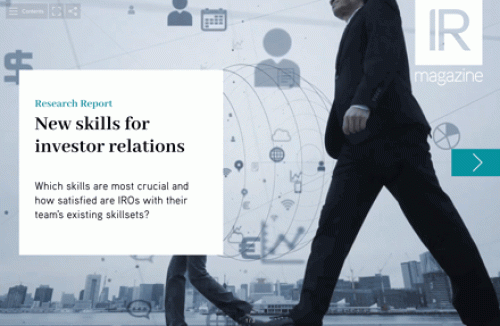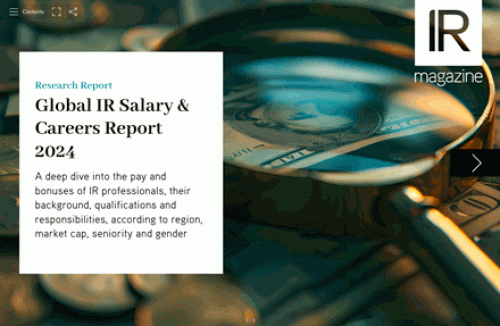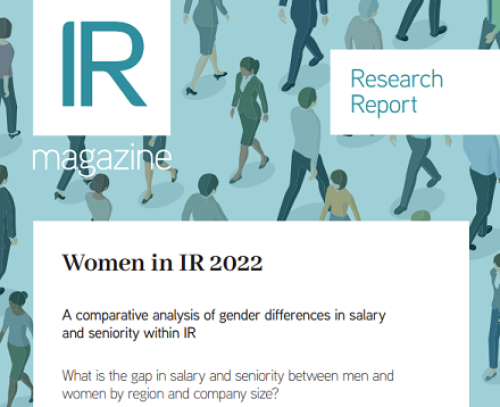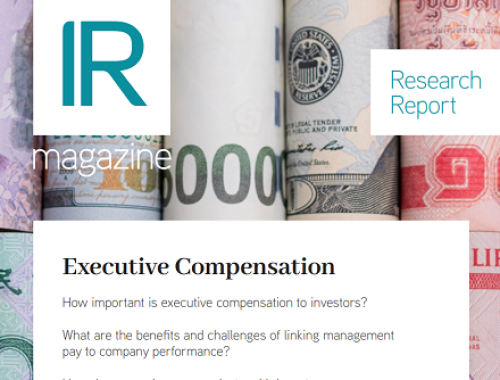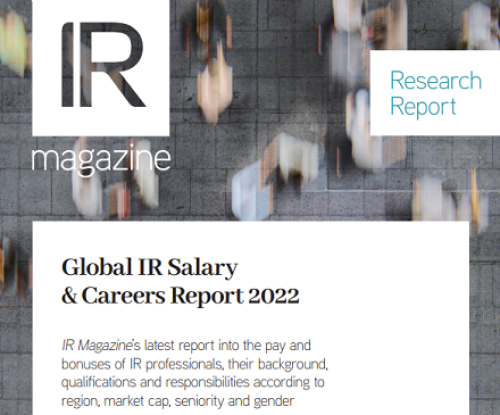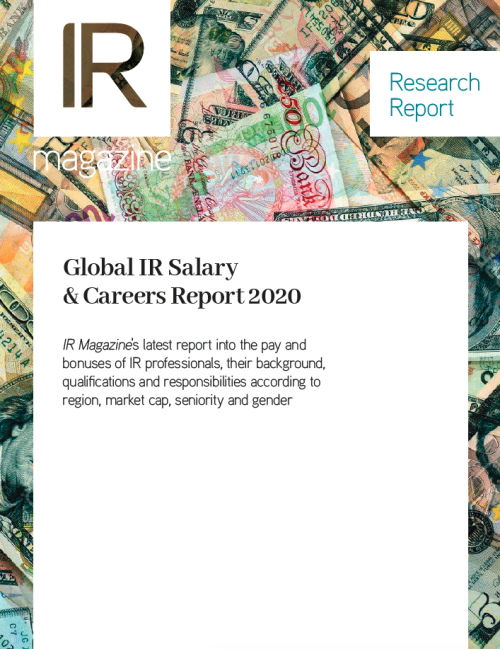Over half of IROs report to the CFO
More than half (57 percent) of US-based IROs report to the CFO, up seven percentage points in the last six years, while just 14 percent report to the CEO or president, according to the 2016 NIRI IR profession, budget and staffing research report.
Reporting lines vary by both job title and market-cap size, with more senior-level IROs in micro and small-caps reporting directly to the CEO rather than the CFO, or to both positions.
As market-cap size increases, senior-titled IROs are significantly more likely to report to either the CFO, to both the CEO and CFO, or to another position, such as treasurer, chief strategy officer or chief communications officer.
The report reveals a number of other US IRO career trends.
Most corporate IROs (58 percent) state they plan to make IR their career profession, a stable percentage since 2008. Of those who are undecided or want their IR role to be transitional, 40 percent hope to advance to the CFO position.
The three most common professional backgrounds of IROs in 1999 are not the same 17 years later.
In 1999, the top three IRO backgrounds were: corporate finance (49 percent), corporate communications/PR (24 percent), and corporate marketing/sales (21 percent). This year, 28 percent of IROs reported corporate finance, 18 percent reported corporate communications/PR, and 14 percent reported securities analyst as the background in which they gained the most professional experience.
While the percentage of IROs with securities analyst experience has risen 333 percent over the last 17 years, the percentage reporting corporate administration has decreased 90 percent.
Additionally, since 2007 the percentage of IROs who report having worked as a buy or sell-side analyst at some point during their career has doubled (from nine to
18 percent).
Of those with an analyst background, the largest single percentage (32 percent) have worked as an analyst between seven and 10 years, while another 20 percent worked as one for 11 years or more. The remainder of current IROs worked for six or less years as an analyst (48 percent).
Forty-four percent of respondents indicated they have responsibilities in addition to IR. This data point has seen some fluctuation in the last eight years: in 2008 it was 59 percent.
A number of variables affect whether or not an IRO has additional responsibilities including market-cap size, working for a Fortune 500 company, and number of years of investor relations experience. For example, as market-cap size increases, the presence of and number of additional responsibilities in addition to IR decreases.
Additionally, individuals working in a Fortune 500 company are half as likely to have additional duties other than IR. Interestingly, an increased number of responsibilities is not positively correlated with increased levels of compensation.
Although the overall percentage and average number of additional responsibilities has varied since 2008, the types and percentages of additional responsibilities IROs are tasked with have remained relatively stable.
The most common additional responsibilities remain corporate communications (50 percent), financial media relations (40 percent), external communications (37 percent), internal communications (30 percent), and financial analysis (21 percent).
In 2008 the average IR staff size was 1.15, but in 2016, it is 2.11. While average micro-cap IR staff sizes have stayed the same or even decreased slightly, other market cap IR departments have experienced growth (although not at the same rate) over the last eight years.
While small-cap company IR departments have increased approximately 28 percent, mega-cap company IR staff sizes have increased an astounding 160 percent during the same period of time.
Additionally, while all sectors have experienced IR staff size growth in the last eight years, growth has not been consistent across industries. Between 2008 and 2016 consumer staples, utilities, real estate, health care and industrials all experienced staff size increases of over 100 percent, while the IT and telecomm sector experienced a 14 and 6 percent increase, respectively.
In 2016, 58 percent of IR respondents were male, and 55 percent reported having more than 11 years of IR experience. Individuals reporting that they are racial/ethnic minorities make up approximately one-tenth of the corporate IR population.

